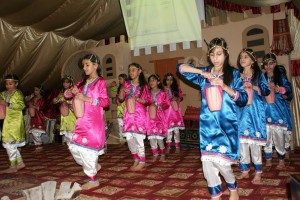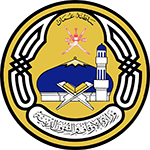In general
 Characterized by hundreds of kilometres of coastline, stunning natural scenery, rugged mountains and baking deserts, Oman offers an incredible landscape to visitors. Forts and Castles are also Oman’s most striking cultural landmarks all along the coastline. Some of the most famous are Mirani, Nizwa Fort, Jabrin Fort, Nakhl Fort, Sohar, Mirbat Castle.
Characterized by hundreds of kilometres of coastline, stunning natural scenery, rugged mountains and baking deserts, Oman offers an incredible landscape to visitors. Forts and Castles are also Oman’s most striking cultural landmarks all along the coastline. Some of the most famous are Mirani, Nizwa Fort, Jabrin Fort, Nakhl Fort, Sohar, Mirbat Castle.
As a major source of diversification, tourism is actively encouraged by the Government to earn foreign exchange and create employment opportunities for Omanis. The country is promoted as a distinctive tourist location, with a natural beauty and unspoilt environment for exclusive holidays. The emphasis is on “quality” with a selective strategy aimed at attracting the more affluent tourists from Europe and Asia, thus avoiding the negative aspects of mass tourism.
Over the past couple of years, major investments have been done to boost the tourism sector. Projects such as the Blue City and the Wave are moves to achieve the planned vision outlined in the Oman 2020 policy document, in which Oman targets doubling the direct contribution from the tourism sector to GDP from the current 2.5% to 5.0% by 2020.
Revenue from tourism has increased in recent years. In 2002, tourism accounted for about 5% of Oman’s gross domestic product (GDP), compared with oil at about 43 percent. In 2004, the Sultanate received 1.5 million visitors, a figure it aspires to double by 2010. The majority of tourists came from Germany, Switzerland, Austria and Great Britain.
The Directorate-General of Tourism has increased its efforts to promote and market the tourist industry in Oman through seminars, conferences and exhibitions. It has also been decided to establish tourist offices in Germany, Britain, Switzerland, Spain, Hong Kong and the the United States. Many publications, tourist guides and maps are being distributed in Arabic, English, French, German and Japanese, while there has been a steady increase in the number of publications about Oman on sale in the local bookshops.
The private sector, having been encouraged to take the initiative in developing this sector of the economy, is now convinced that tourism is both viable and profitable. The Government arranges for soft loans, participates in the promotion of tourism and assists in leasing land for strategic tourism projects. To this end all hotels will be in private hands apart from the al-Bustan hotel which serves as a guest palace for meetings and summits. Characterized by hundreds of kilometres of coastline, stunning natural scenery, rugged mountains and baking deserts, Oman offers an incredible landscape to visitors. Forts and Castles are also Oman’s most striking cultural landmarks all along the coastline. Some of the most famous are Mirani, Nizwa Fort, Jabrin Fort, Nakhl Fort, Sohar, Mirbat Castle.
Characterized by hundreds of kilometres of coastline, stunning natural scenery, rugged mountains and baking deserts, Oman offers an incredible landscape to visitors. Forts and Castles are also Oman’s most striking cultural landmarks all along the coastline. Some of the most famous are Mirani, Nizwa Fort, Jabrin Fort, Nakhl Fort, Sohar, Mirbat Castle.
As a major source of diversification, tourism is actively encouraged by the Government to earn foreign exchange and create employment opportunities for Omanis. The country is promoted as a distinctive tourist location, with a natural beauty and unspoilt environment for exclusive holidays. The emphasis is on “quality” with a selective strategy aimed at attracting the more affluent tourists from Europe and Asia, thus avoiding the negative aspects of mass tourism.
Over the past couple of years, major investments have been done to boost the tourism sector. Projects such as the Blue City and the Wave are moves to achieve the planned vision outlined in the Oman 2020 policy document, in which Oman targets doubling the direct contribution from the tourism sector to GDP from the current 2.5% to 5.0% by 2020.
Revenue from tourism has increased in recent years. In 2002, tourism accounted for about 5% of Oman’s gross domestic product (GDP), compared with oil at about 43 percent. In 2004, the Sultanate received 1.5 million visitors, a figure it aspires to double by 2010. The majority of tourists came from Germany, Switzerland, Austria and Great Britain.
The Directorate-General of Tourism has increased its efforts to promote and market the tourist industry in Oman through seminars, conferences and exhibitions. It has also been decided to establish tourist offices in Germany, Britain, Switzerland, Spain, Hong Kong and the the United States. Many publications, tourist guides and maps are being distributed in Arabic, English, French, German and Japanese, while there has been a steady increase in the number of publications about Oman on sale in the local bookshops.
The private sector, having been encouraged to take the initiative in developing this sector of the economy, is now convinced that tourism is both viable and profitable. The Government arranges for soft loans, participates in the promotion of tourism and assists in leasing land for strategic tourism projects. To this end all hotels will be in private hands apart from the al-Bustan hotel which serves as a guest palace for meetings and summits.

